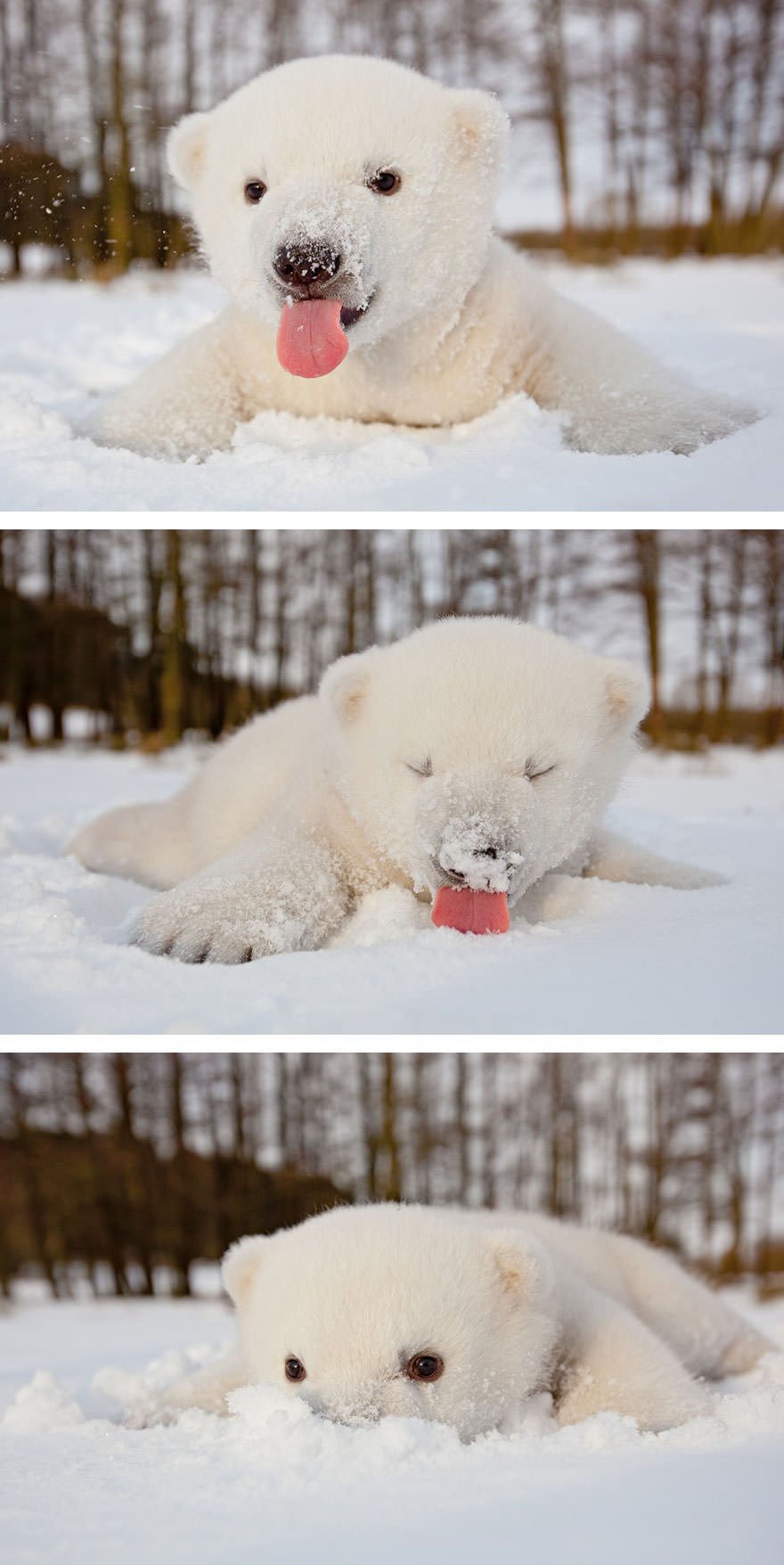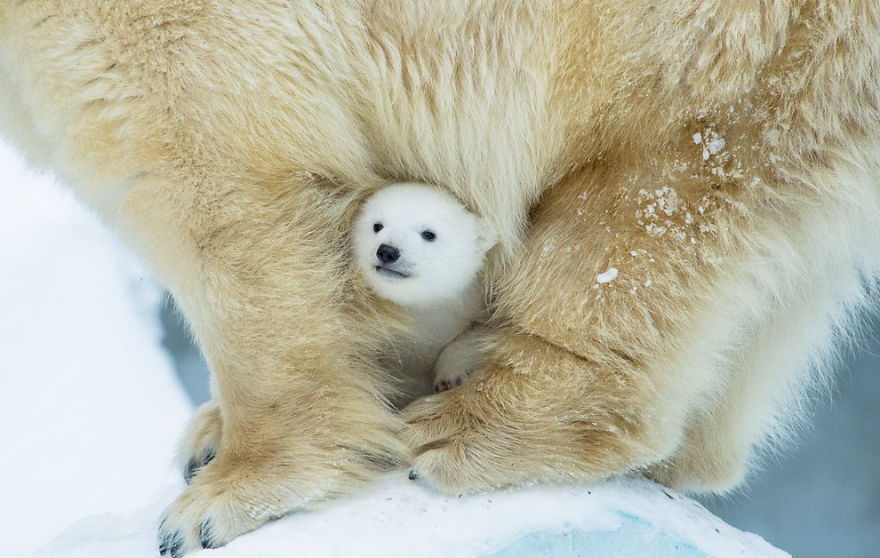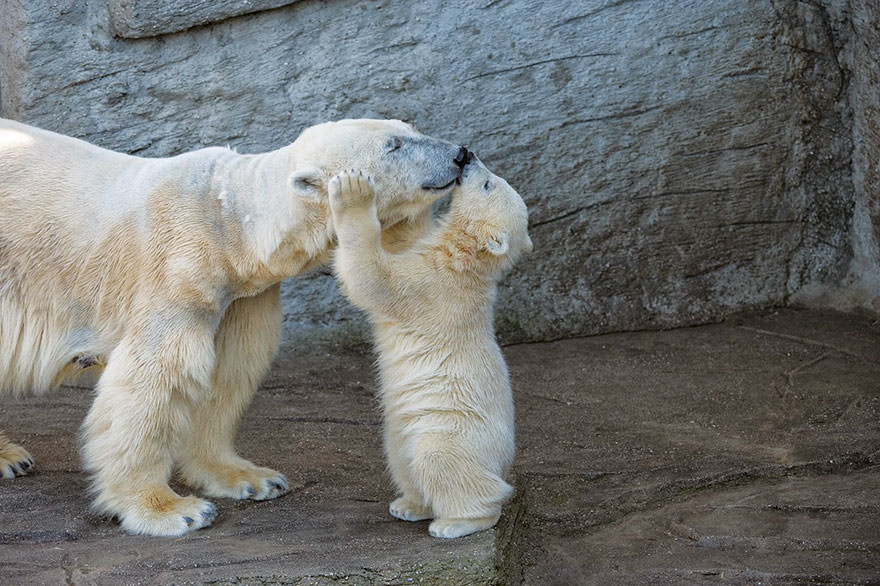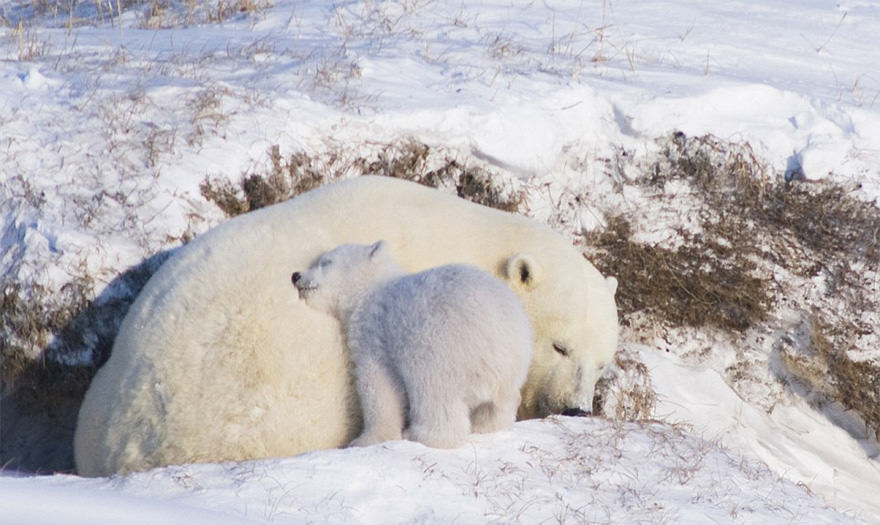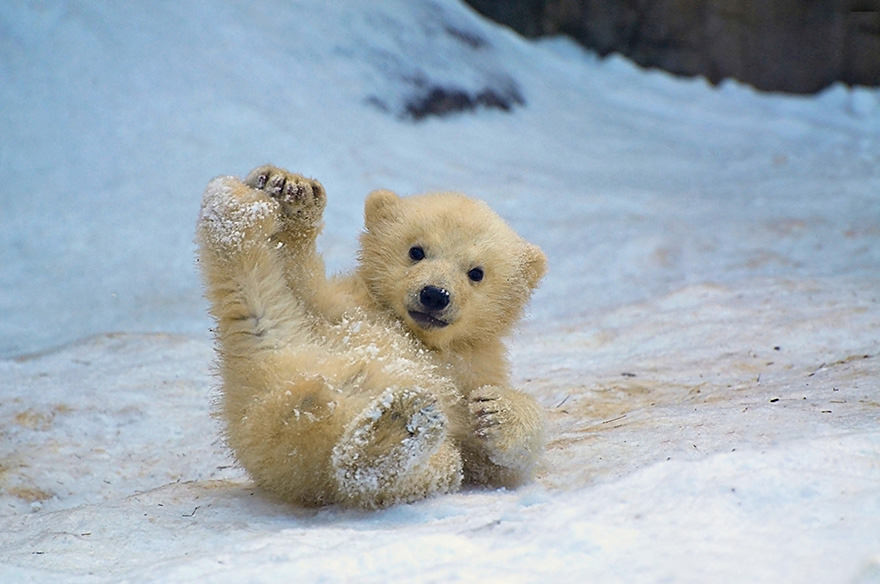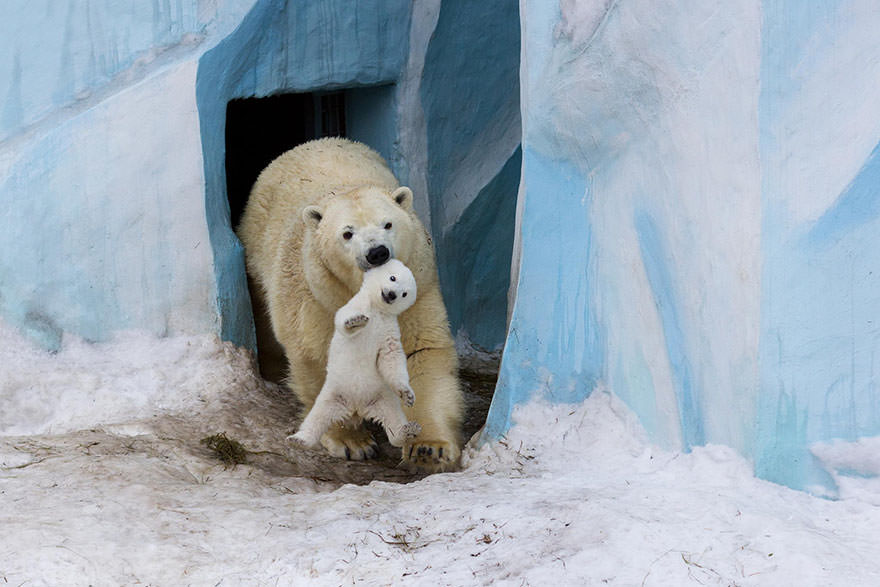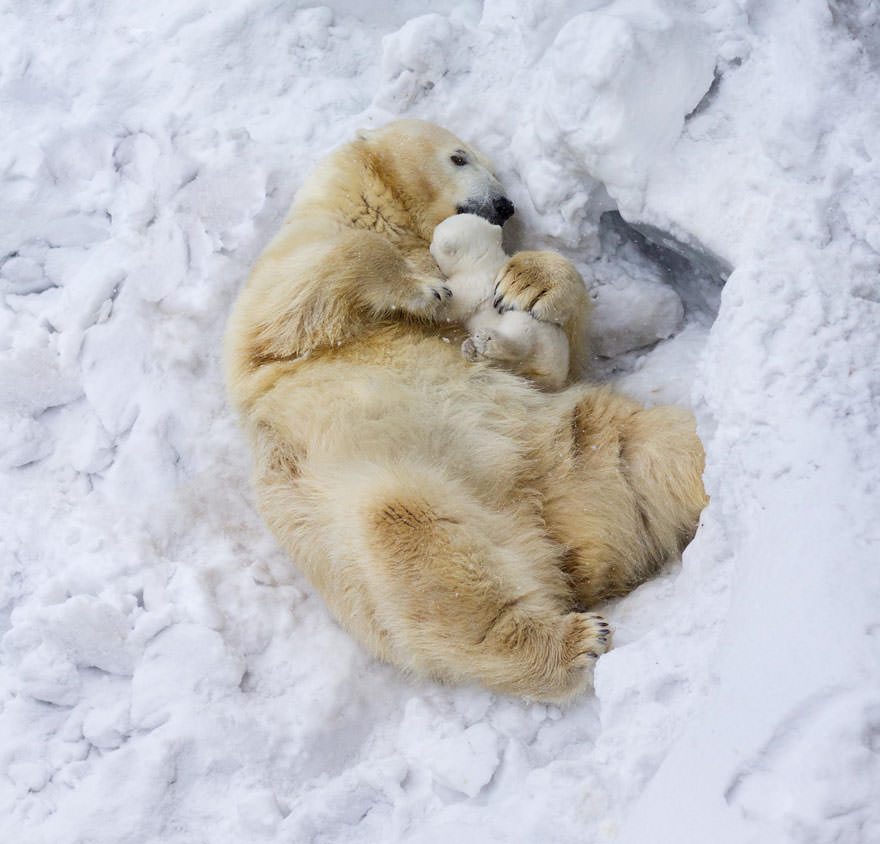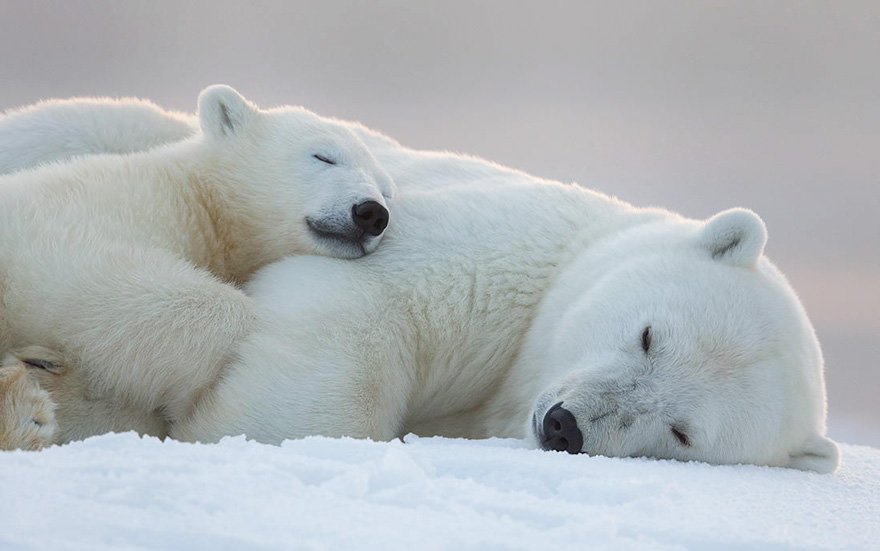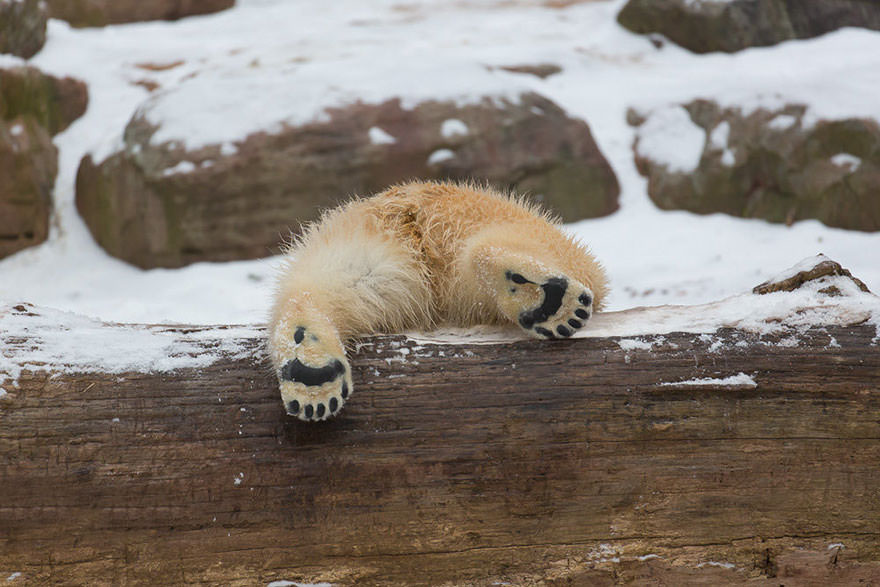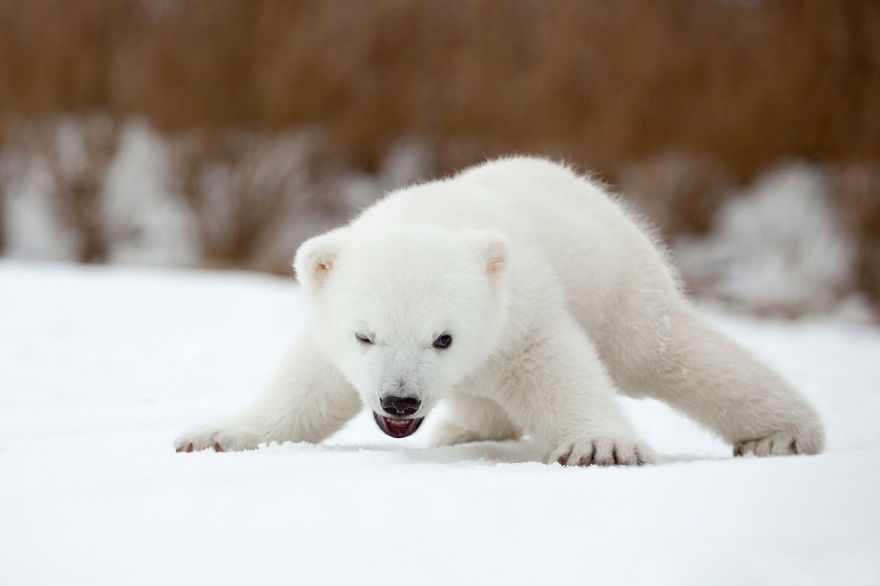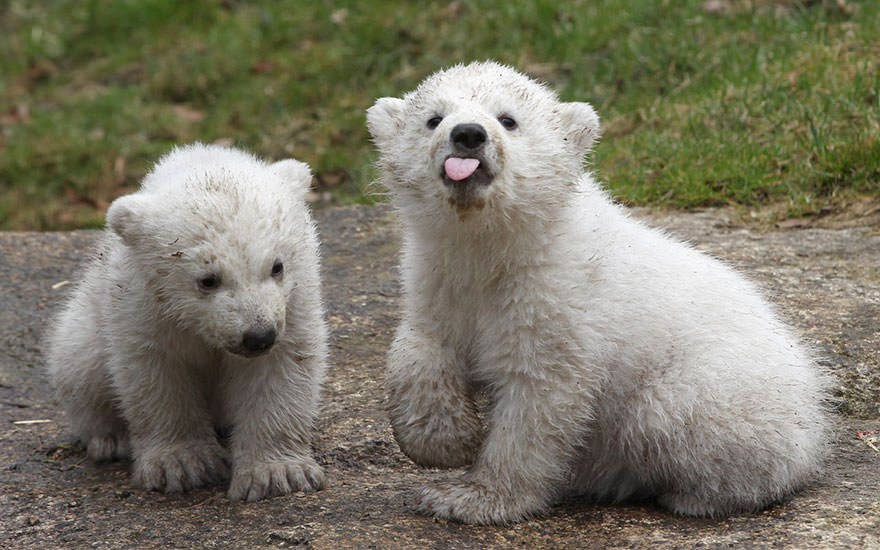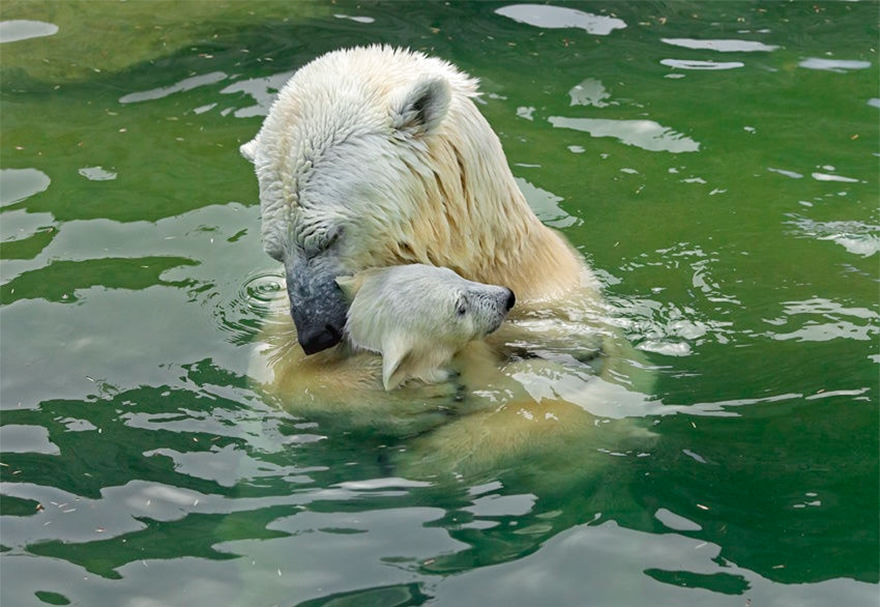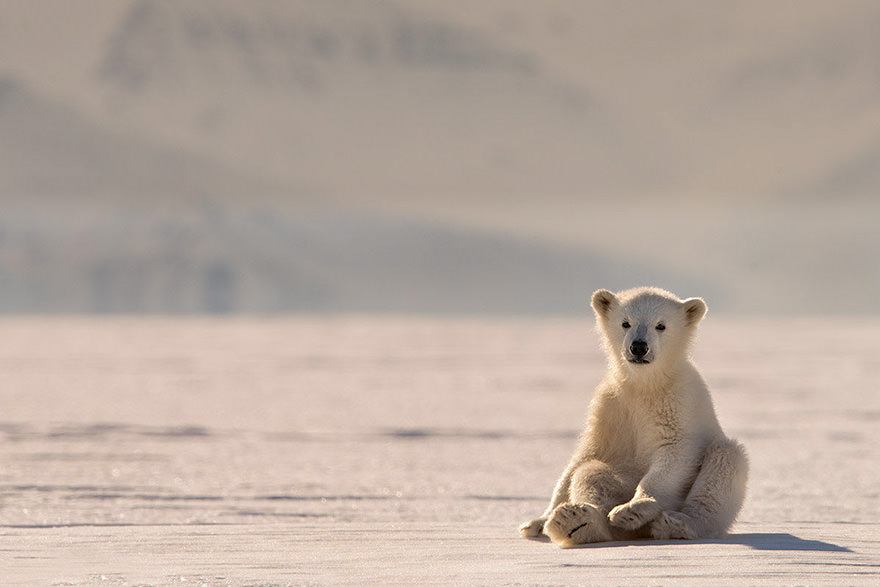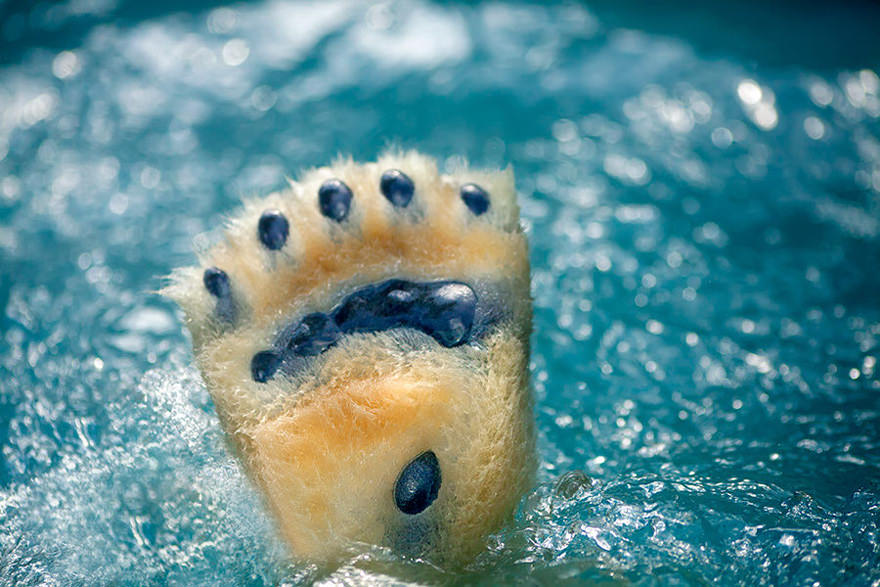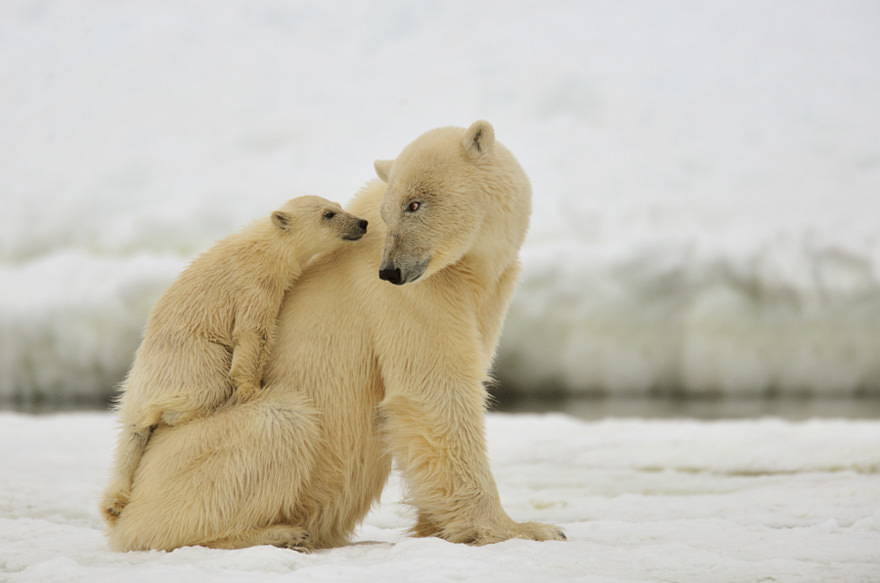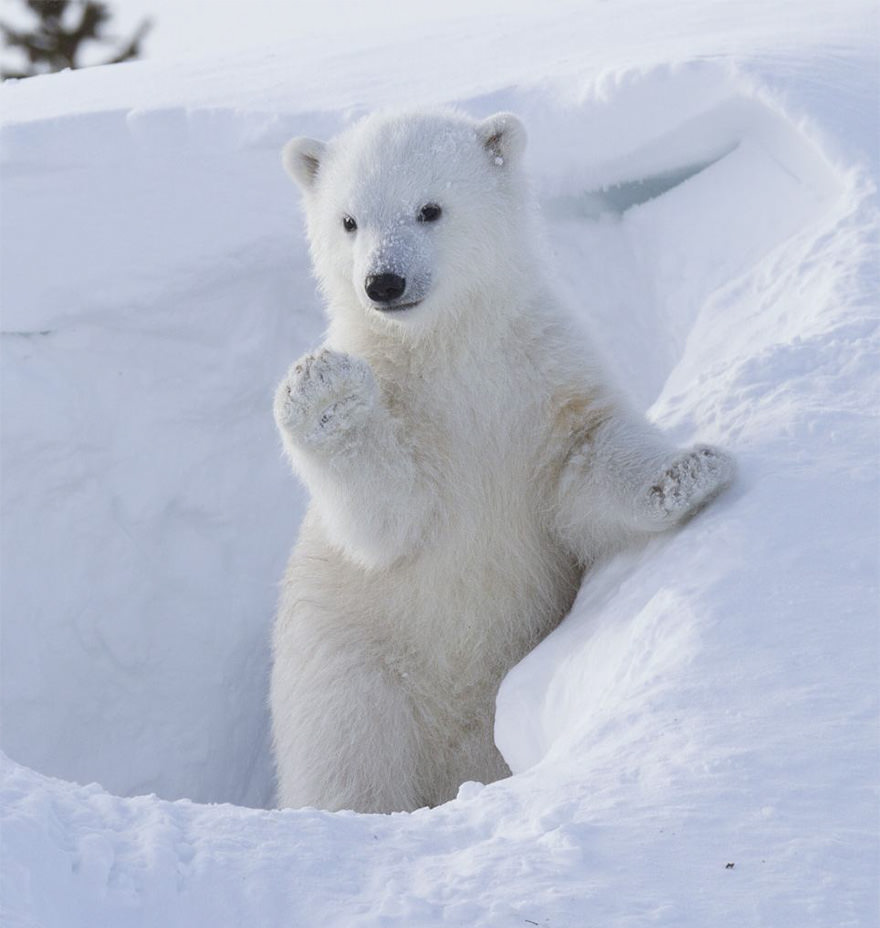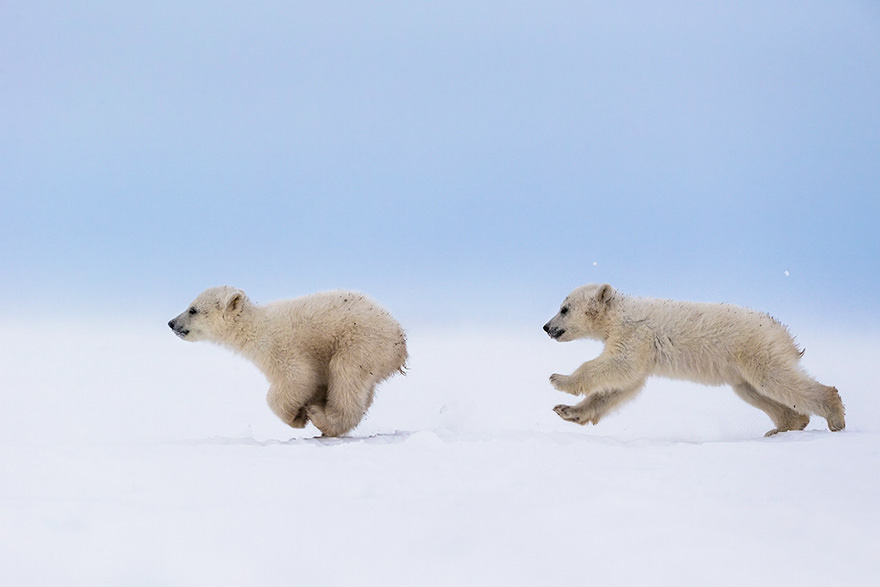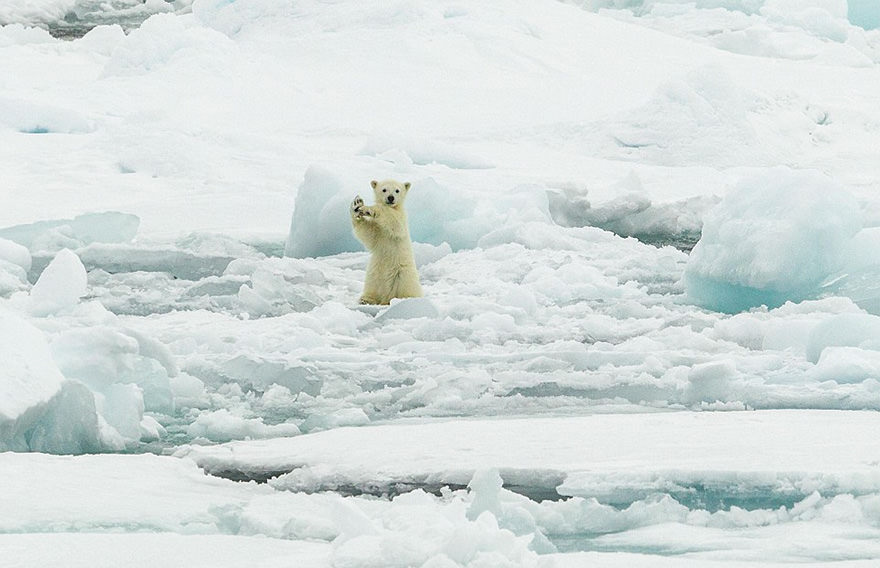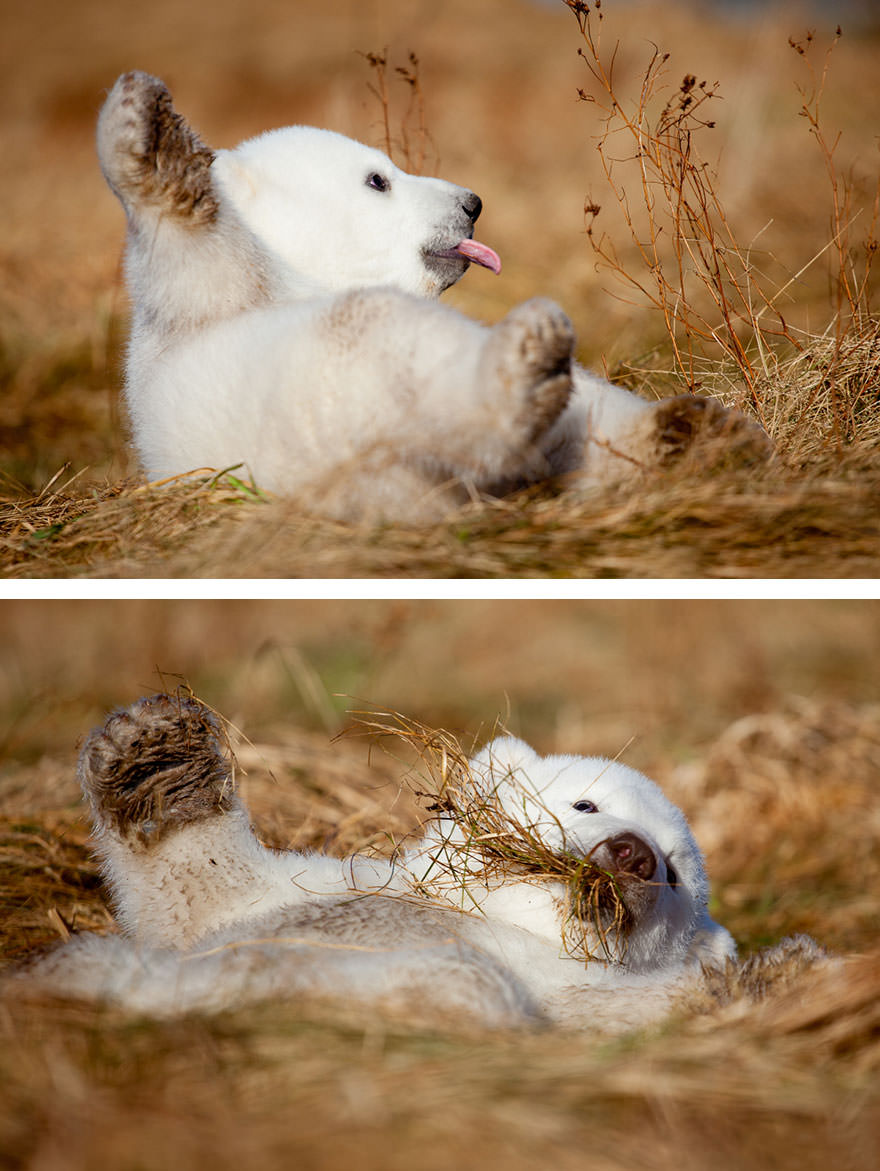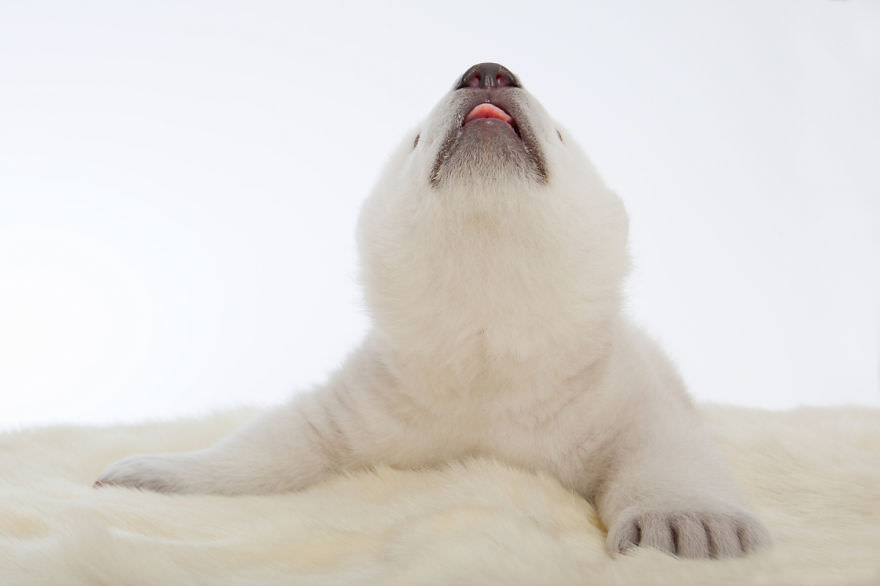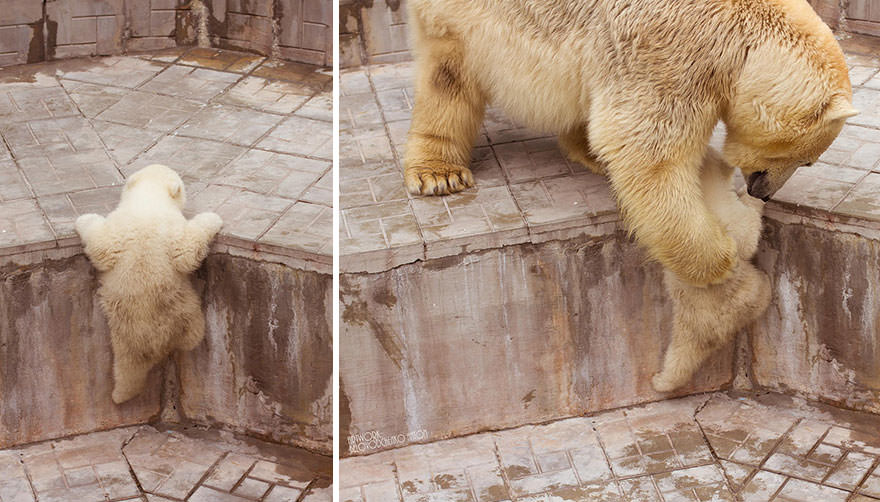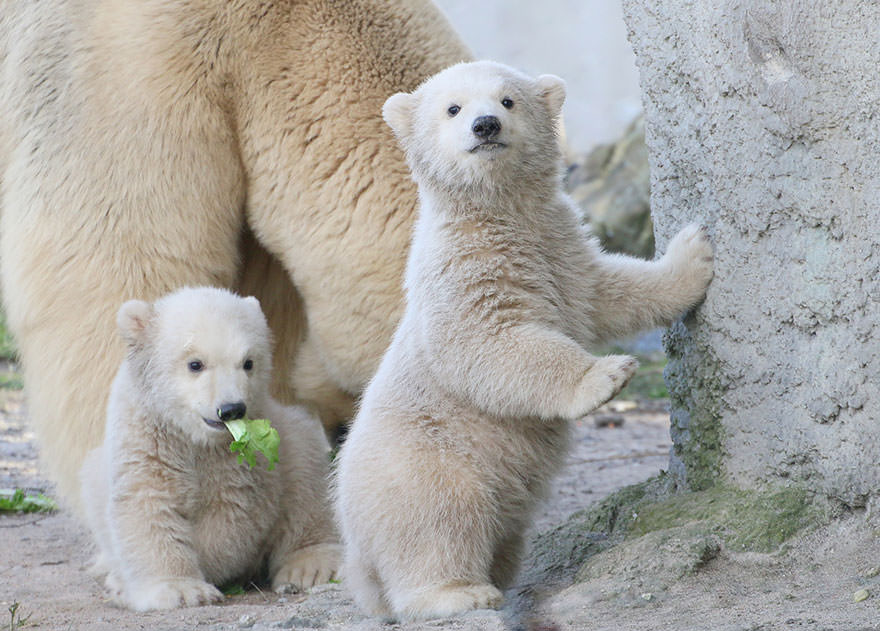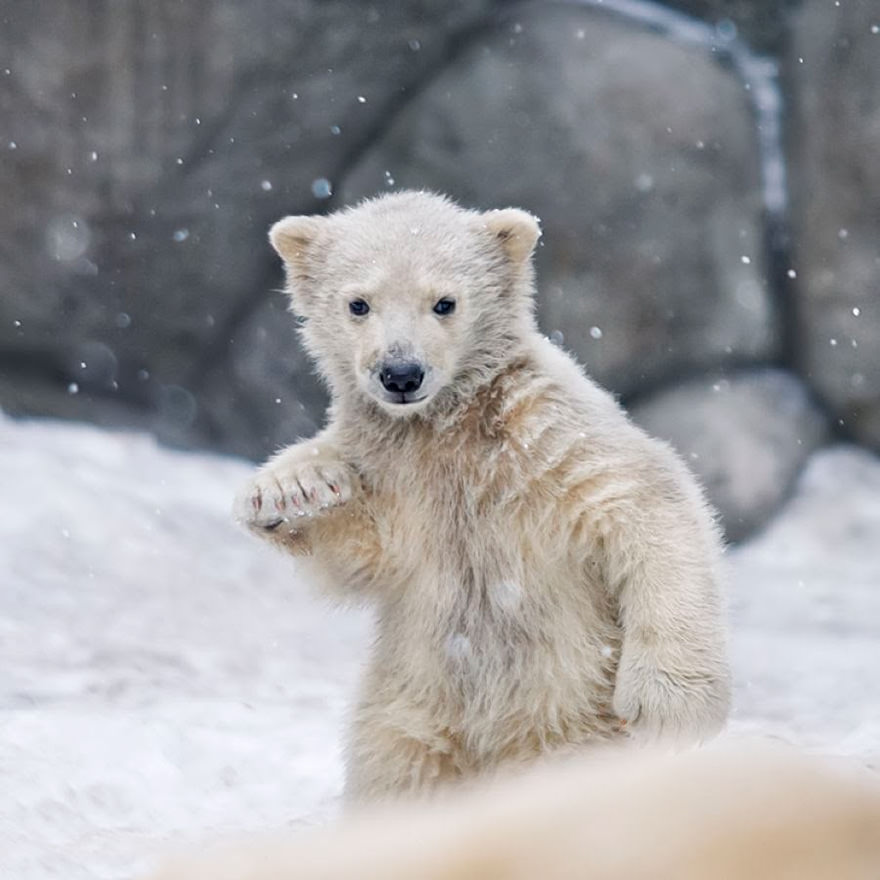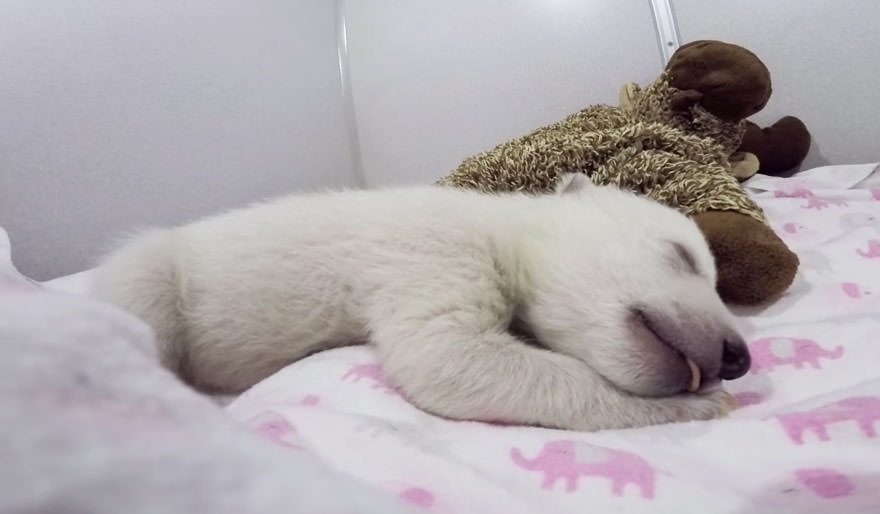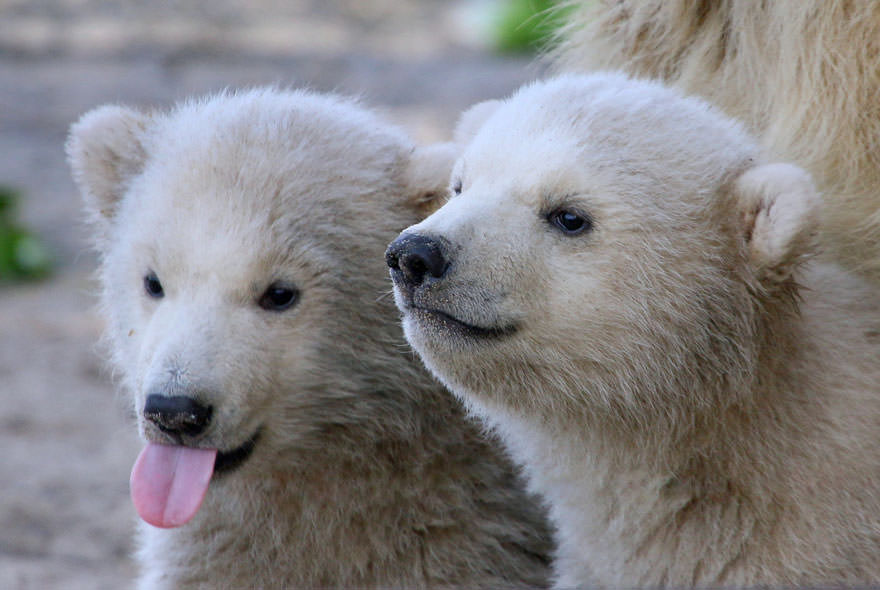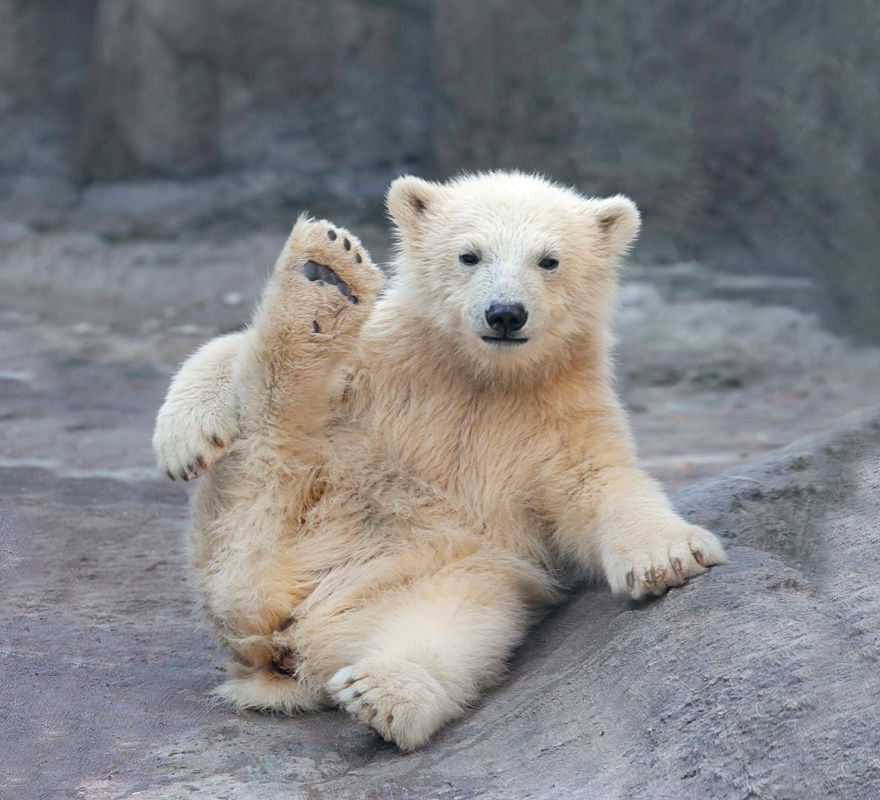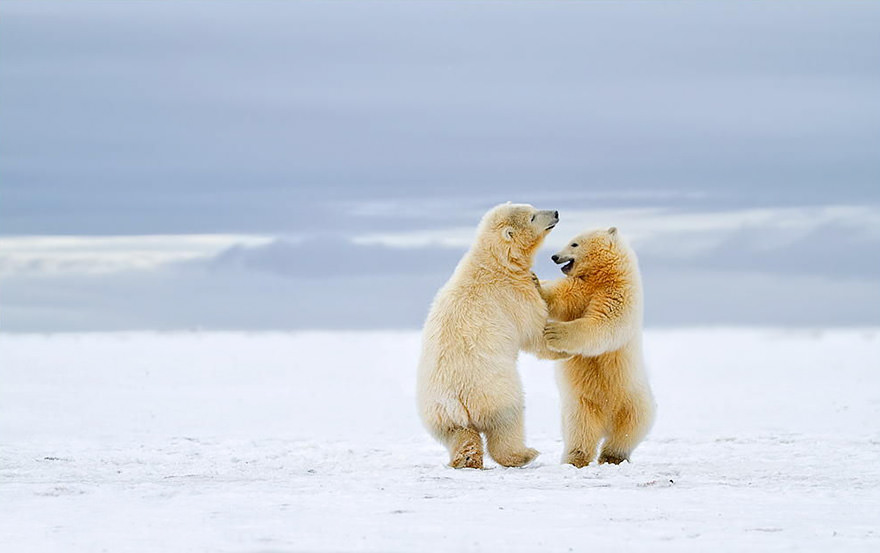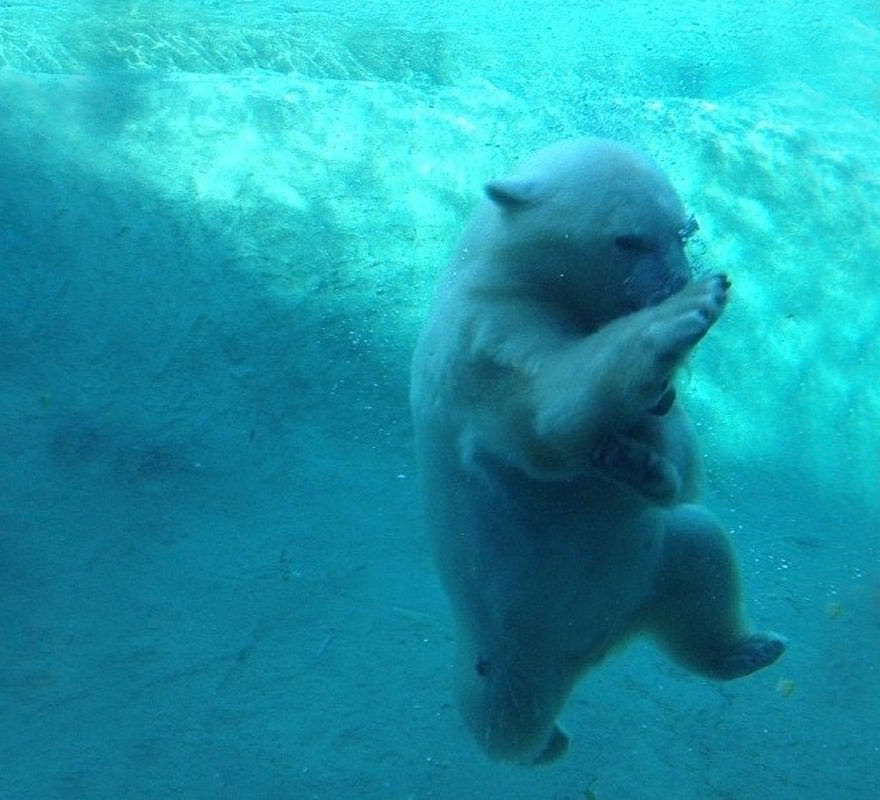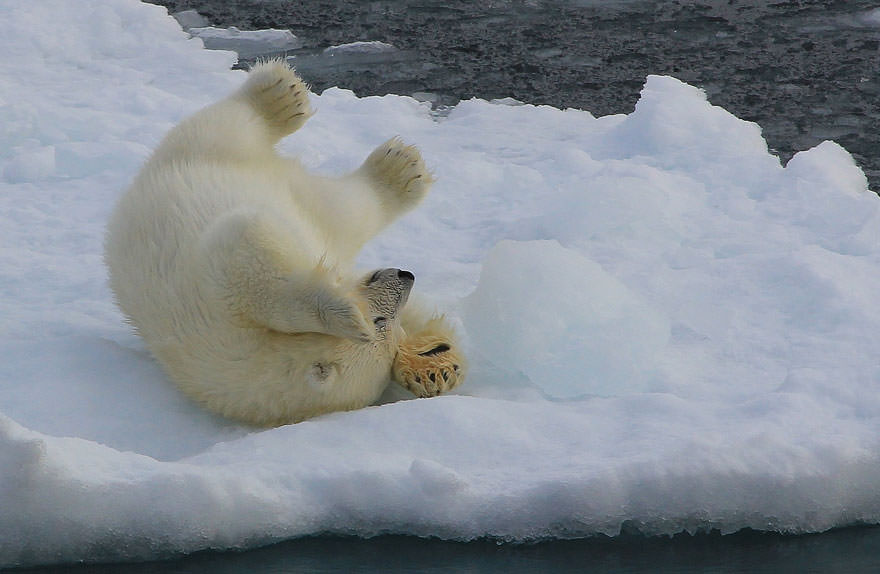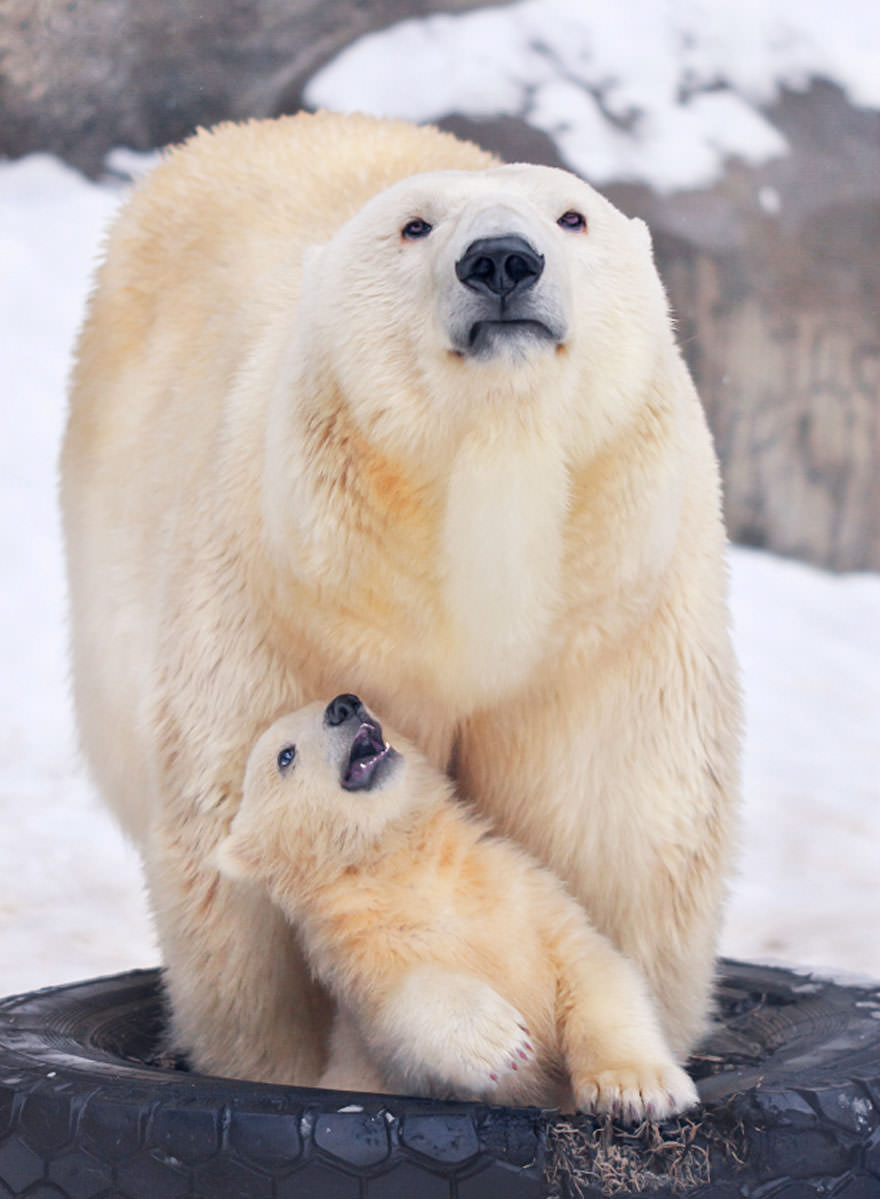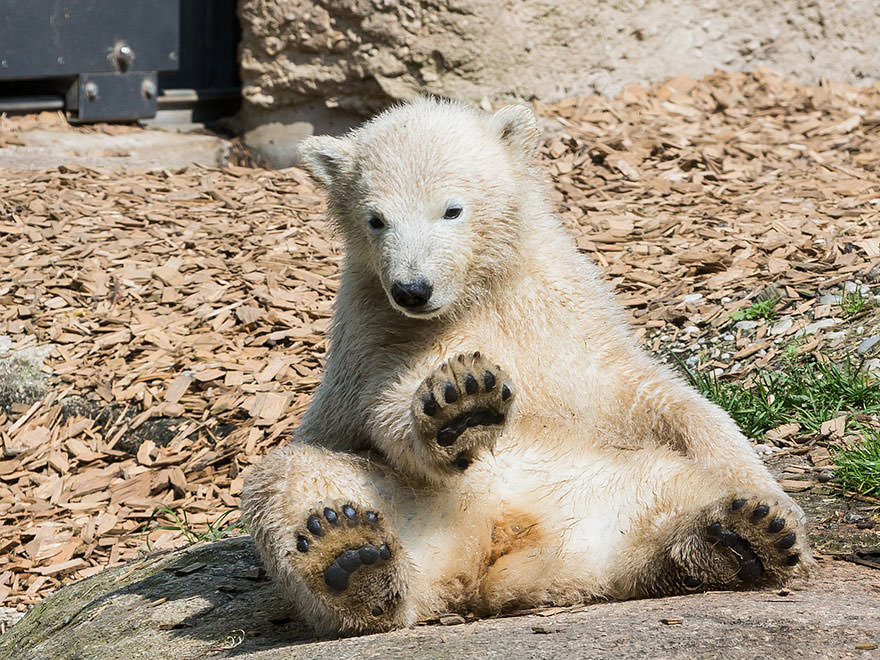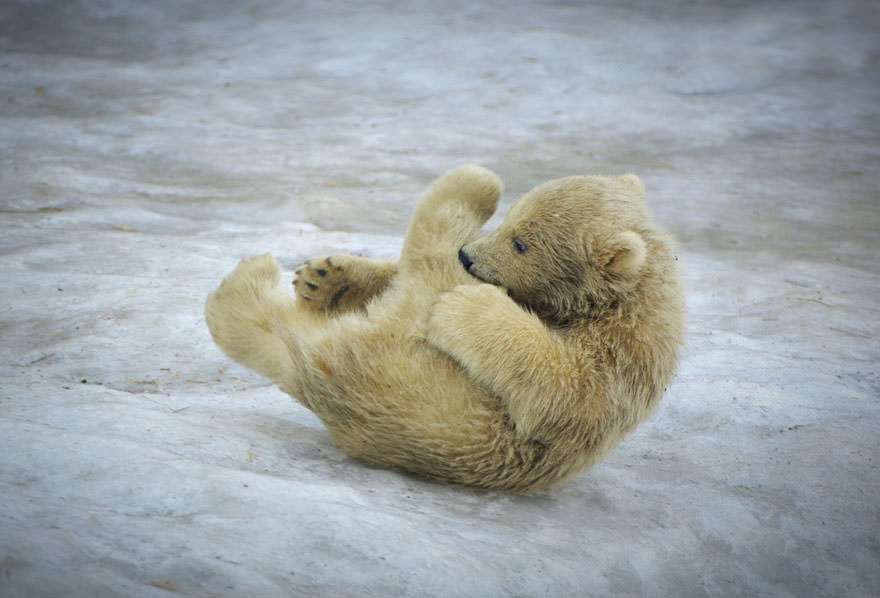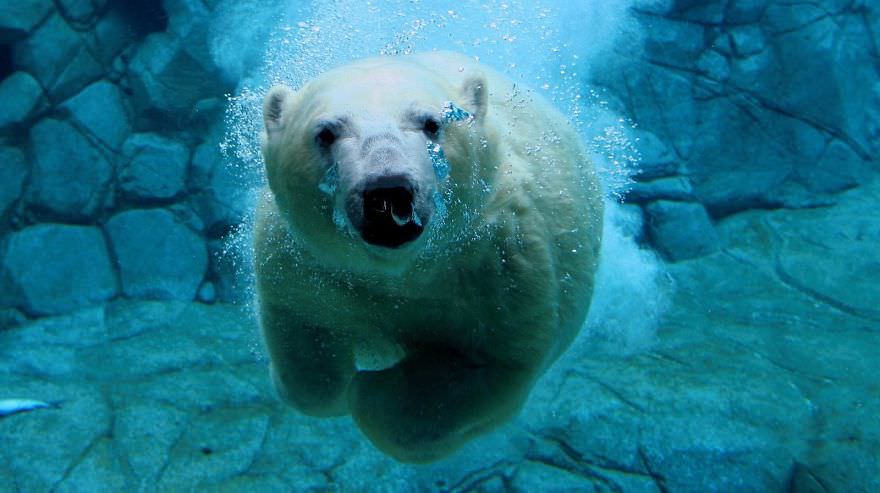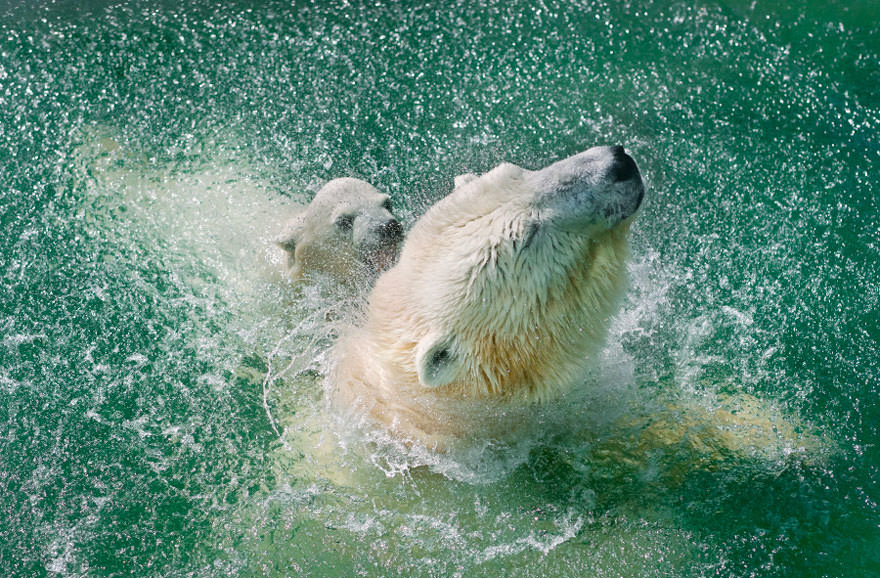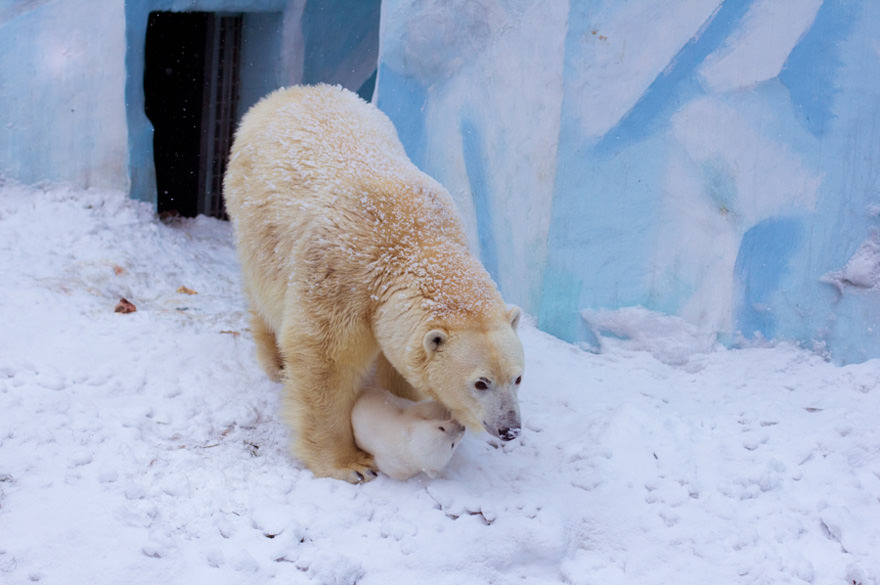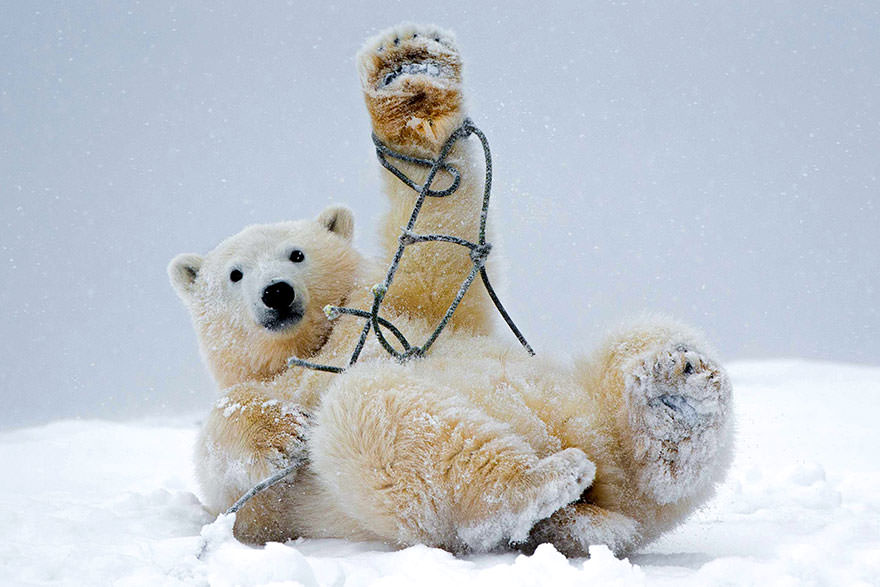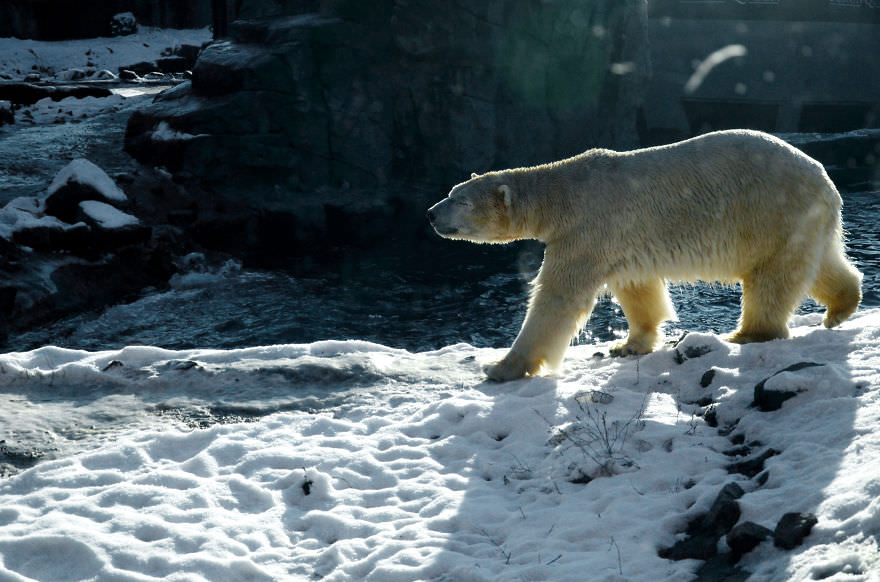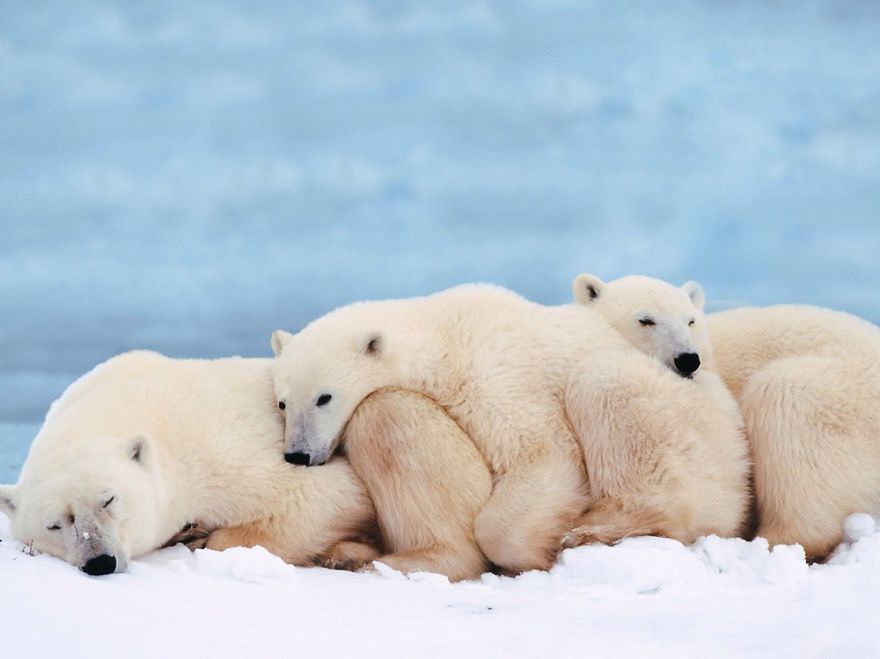A polar bear cub is born in January after approximately eight months of gestation. Mating happens in June, but fetal development occurs mainly in the last two months after the fertilized egg implants in the uterus in November (delayed implantation). During winter, a bear’s fetus must be stored in fat so that she can survive and provide milk for her cubs until spring (nature’s method of birth control). When the cubs are born, they weigh less than a pound, have only a light covering of fur, and barely crawl. Mother animals eat their birth membranes and lick their cubs, warm them against their thinly furred belly, and lick the cubs after they are born. Since mother bears are typically awake during the day because they are caring for their babies, they usually lose a third of their body weight over winter, while non-nursing bears lose only 15 to 25 percent.
Polar bear cubs are born small and helpless, with closed eyes. Cubs have fabulous fur at birth, which makes them appear hairless. Better developed cubs can climb trees, but they cannot outrun wolves or other bears. Depending on how much milk their mother produced and how many littermates they shared it with, the cubs weigh 4 to 6 pounds when they leave the den at 2 to 3 months of age. The mothers protect, warm, and nurse their young, sometimes cradling them in their forelegs as they lick their heads and nurse them. When the cubs cry, the mothers rush to comfort them. Mothers will sometimes carry cubs in their mouths to new locations or hold crying cubs in their mouths to help them down from trees if needed.
The cubs taste what their mothers consume during the first month after emerging from their dens. However, they do not eat solid food until their chewing teeth erupt later in the spring. They continue sucking until the fall, when they hibernate in the fall. Father polar bears don’t help raise the cubs, and if they did, they would probably be more competitive than helpful. Mothers build most of the dens during fall, but the cubs help rake leaves and twigs for bedding. The mother sleeps closest to the door to provide warmth and protection.
Mothers lead and protect their cubs until June, when they are about 17 months old, when they are ready to mate again. She then becomes intolerant and chases away her yearlings. After several years, perhaps indefinitely, she allows them to stay in parts of her territory, which she avoids. To protect herself and her offspring, she ejects trespassing bears. Until they reach maturity, female offspring use even more significant portions of their mother’s territory. Meanwhile, the mother expands her territory to include those areas adjacent to her if available or tolerates overlap with her daughters if those areas are not readily available. During their development, young males leave their mothers’ territories and travel up to 137 miles or more before settling down and establishing breeding ranges.
Here are some adorable photos of polar bear cubs and their mothers that will make your day.



